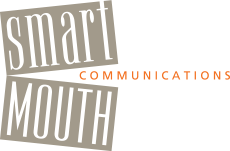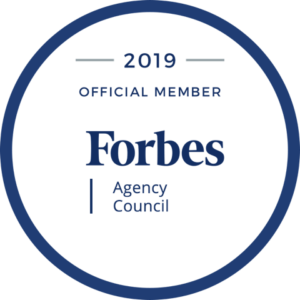SmartMouth Talks!
Plus ça change, plus c’est la même chose
The more things change, the more things stay the same. When it comes to how people communicate, this phenomenon confounds me.
Certainly, in the marketplace of the world, and even in the smaller marketplaces of our own cities or our own professions, there is so much going on that’s new and changing and ground-breaking. There’s so much innovation, so much progress, so much disruption – in technology for sure, but in medicine, design, fundraising, manufacturing, energy, and even in the basics like education and road construction. You name it, and there’s a new way to do things …
Why is it, then, that most speeches and presentations are, for the most part, still as predictably dull and ineffective as they were a decade ago? Why have we made the “things” in our lives faster, more streamlined and efficient, more user-friendly and accessible, but we’ve allowed our “selves” to lag behind? Most speeches and presentations are old school; they’re anything but streamlined or user-friendly. As much as we expect and embrace advancements in our everyday lives, we deliver and accept the same old same old in our everyday conference rooms.
What would it take to “disrupt” a typical speech or presentation, to deliver something new, better, faster, more accessible and memorable? Let’s explore that next time …
Eat, Sleep, Communicate
Life is busy, life is full. Who has time to think about communicating better?
Sounds reasonable enough. But wait, we send messages, make points, deliver speeches (okay, maybe not from a podium) every single day. We communicate as much as we eat or sleep, but we dedicate less time to thinking about how we do it and making it work better for us.
So what’s my point? Communicating is as central to your functioning as a human being as eating and sleeping are. Maybe more. Communicating is how we relate to others, get things done, solve problems, achieve success, and be in our lives as members of teams, organizations, and communities.
Communicating is the currency of relationships, working and personal, and so you want to think about it, work on it, and keep your currency value as high as possible!
Less is More
Sometimes spin just happens. All by itself. And there’s no need for a lot of talk.
Lean and Mean
I’ve been thinking a lot lately about the lean movement that’s been afoot in industry for almost two decades now. Eliminating waste, promoting efficiency. Producing according to demand, satisfying customer needs. Creating a value stream. Hmmmmm . . .
Simple Rx for Speakers and Presenters
When anticipating a speech or presentation, do you have any of the following symptoms:
Don’t know where to begin?
Worry about being interesting or relevant?
Have a tendency to ramble or go off on tangents?
Experience anxiety or nervousness?
Repeat after me ten times, “It’s all about them. It’s not all about me!” Okay, you should be all better now!
It can be such a relief to frame your thinking around “them” – the audience – and can take such a burden off of you!
If you don’t know where to begin, or how to be interesting and relevant, think about them or go find out about them. Go deep, and think seriously – or do research to find out – about what this audience really, really cares about. You want to ask yourself, at the end of the day, what do they really care about when it comes to my topic or expertise? Not what you care about, but what they care about . . . this might require a bit of an adjustment.
If you tend to ramble or go off on tangents, it might be that you find your information very interesting and compelling. Or it might be that you’re so knowledgeable and eager to share it, and/or that you like to be thorough. Either way, it doesn’t matter. It’s not about you. It’s about them. Every audience is listening for the what’s-in-it-for-me nugget. If there’s even a question in your mind as to whether the audience will share your enthusiasm for all your info, then you should limit your talk and be sure to give them something of value. Set firm parameters for yourself by thinking about them.
Oh, and here’s a quick tip for you . . . If you’re really not sure what they really care about, or whether they will share your enthusiasm for lots of detail on your topic, ask yourself this question: why is this audience in the room, by choice or by obligation? Aha! Naturally, if they are there by choice, you have a bit more latitude with time and detail. However, if they are there out of obligation, then you are well advised to be brief.
And, finally, if you are nervous before speaking to a group, look at them, think about them, connect with them. It is said that nervousness is just your body’s adrenaline gearing up and giving you the energy to perform well. That may be, but I say turn to them for some relief. Warm up by talking to members of the audience before you begin formally, or open your talk with a question, be sincere about receiving input, and engage in some dialogue or banter. Share the floor with them, and all of you will have a more enjoyable experience!
Which one are you?
“There are two types of speakers: those who get nervous and those who are liars.”
– Mark Twain
Pass the Remote, Please . . .
Okay, so we’ve all sat in rooms and endured speakers who ramble, never get to the point, are hard to follow, don’t seem sharp or prepared, give way too much background, or all of the above. Right? And why? Why are we so willing to be so polite? Why do we enable the complacency and mediocrity and lack of awareness of others who speak and present to us . . . I bet if we had a remote control, we’d switch to another speaker!
We’re polite about it because we empathize. There, but for the grace of God, go I; it could just as easily be me up there; I’m awful too, I hate it, I’m the worst; this poor guy, better him than me. Not true! Or, it certainly doesn’t have to be true! Because this bad-speaker/enabling-audience phenomenon is soooo unnecessary, I want to offer a nugget of advice about “communications packaging” that might help you . . . this will certainly heighten your awareness of where other speakers and presenters go wrong, but it will also give you a little bit of a guideline to improve your own communications.
So, here goes: Package your communications around messages versus information. Messages are statements that make a point, that do a job like persuading or motivating or educating. Messages are verbal takeaways from a talk, they are memorable. Information is the detail or data or examples that back up and support a message. Granted, some information may be so important that it has to take center stage. In that case, fine, then it is the message and it probably comes with some supporting info of its own. But 99.9% of the time, you will find that what you’re seeing with the rambler, the never-gets-to-the-point speaker, the unprepared-TMI-presenter is probably an information dump without any packaging around it!
Think food chain. Messages are higher on the communications food chain than information. The next time you’re preparing a talk, you should test yourself and ask, am I leading with just a bunch of info, or am I leading with a message and then backing it up with info? Trust me, you are salvageable, and you will be more effective, with just a few simple clicks of the keyboard. Which is a lot better than your audience wanting to get rid of you with a few simple clicks of the remote!
Hey Presenters, Listen Up! Yogi’s Right . . .
You got to be careful if you don’t know where you’re going, because you might not get there.
– Yogi Berra
Good Seminar Mojo!
Reflecting on yesterday’s Leadership Communications Seminar – SmartMouth’s first! – I am struck mostly by the good vibe. A diverse group of twelve leaders gathered in an unusually comfortable, sunlit conference room in downtown Salt Lake City to listen, learn, share, discuss, and work together! Time flew. Relationships were formed. Common challenges were noted. Accepted practices were questioned. New ideas and thought processes were floated. Absorption. Understanding. Renewed motivation. Really good group mojo.
Because of the strength and experience of the participants, I morphed into being more the facilitator of dynamic group discussions than the trainer/teacher/coach I so often am. These were professional leader/communicators, exploring the pitfalls and the opportunities they have when they open their mouths – in both formal and informal settings. I used a very hands-on approach, with lots of case studies – including the real-life cases raised by participants – and pushed them pretty hard to develop strong, meaningful messages. No pabulum allowed.
Over lunch, we side-tracked for a little to share personal stories and experiences. I passed around a plate of silk fortune cookies; inside each one was a folded-up slip of paper with a question or the start of an unfinished sentence. All about communicating, all different, all prompting the group into interesting conversation and, in most cases, another learning moment. Some surprising, some very funny, moments.
The opening and culminating exercises of the Seminar were the oh-so-simple-but-oh-so-dreaded “personal introductions,” which interestingly and, I might add, predictably not one of these twelve leaders had at-the-ready. The difference between their output at 9 am and their output at 4 pm was remarkable and very rewarding to observe!
Thanks to all participants! I was honored to be your leader yesterday!
Omigosh, as Presentation Horror Stories Go, This One’s a Winner!
I love coaching engineers on communication and presentation skills – partly because they have the most outrageous anecdotes about their peers. Today I heard a real doozy!
Turns out, in the middle of his presentation at a major annual conference, a high-level, well-known engineer answered his cell phone! Yes, that’s right . . . he was on-stage, in front of a large audience, his cell phone rang in his pocket, he took it out, said hello, told the caller he was in the middle of a presentation and couldn’t talk, then he hung up, put the phone back in his pocket, and resumed the presentation.
Now if that doesn’t take the grand prize, I give up! Wow, I was speechless!



